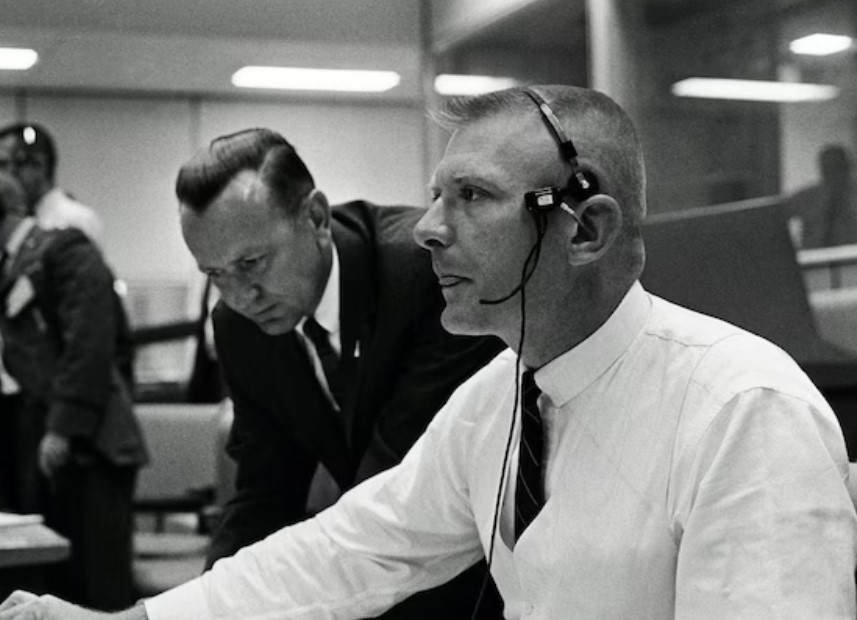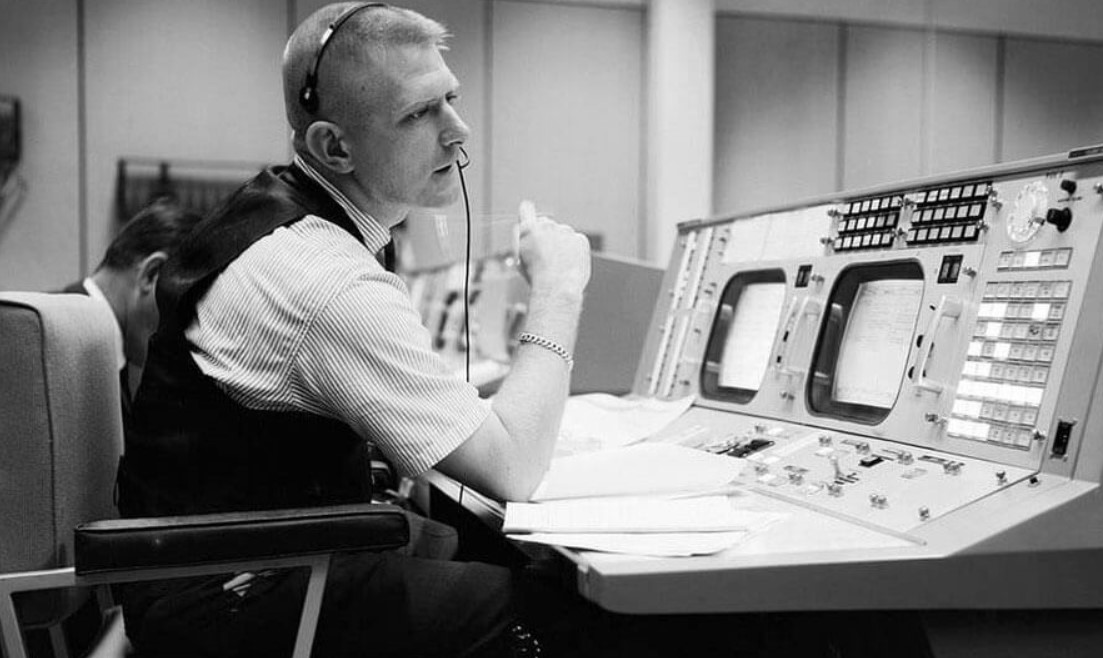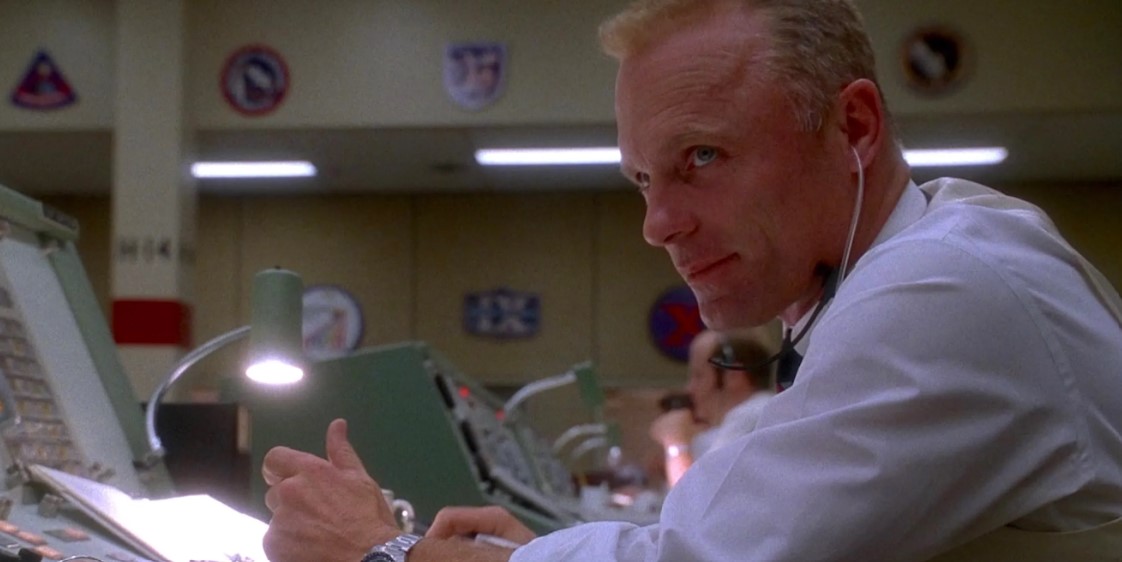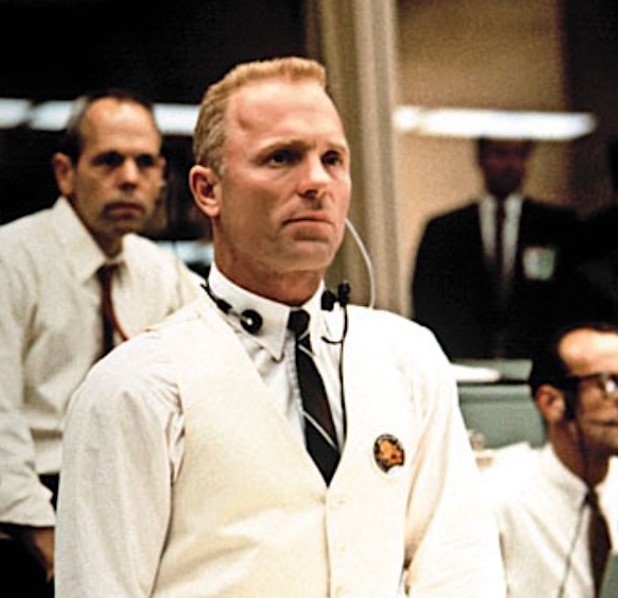Gene Kranz Mobile Number, Phone Number, Email ID, House Residence Address, Contact Number Information, Biography, Whatsapp, and More possible original information are provided by us here.

Eugene Francis Kranz, an American aerospace engineer, was born on August 17, 1933. He served as the second Chief Flight Director of the National Aeronautics and Space Administration (NASA), managing missions for the Mercury, Gemini, and Apollo projects, including the Apollo 11 mission, which was the first lunar landing mission performed. Although he was the director of the successful efforts made by the Mission Control team to rescue the crew of Apollo 13, he was also represented by actor Ed Harris in the film of the same name that was released in 1995.
It was his wife, Marta Kranz, who crafted the smart “mission” vests (waistcoats) of various designs and materials for him to wear for his Flight Director missions. He had a close-cut flattop hairdo as his signature look. He was the one who came up with the term “tough and competent,” which later became associated with the “Kranz Dictum.” Kranz has been the topic of several films, including documentaries, as well as books and essays published in periodicals. The President of the United States has awarded Kranz with the Medal of Freedom.
Kranz was chosen as the second most popular space hero in a poll conducted by the Space Foundation in the year 2010. At an early age, Kranz had an interest in space, and while he was still in high school, he produced a thesis on the subject of a single-stage rocket that might one day reach the Moon. “The Design and Possibilities of the Interplanetary Rocket” was the title of the academic thesis. Kranz decided to enroll in college after completing his high school education in 1951.
Through his studies at Saint Louis University’s Parks College of Engineering, Aviation, and Technology, he earned a Bachelor of Science degree in Aeronautical Engineering in the year 1954. In 1955, he completed his pilot training at Lackland Air Force Base in Texas, which led to his appointment as a second lieutenant in the United States Air Force Reserve. While Kranz was still in the process of getting his wings, he tied the knot with Marta Cadena, who was the daughter of Mexican immigrants who had left Mexico during the Mexican Revolution.
We sent Kranz to South Korea so that he might pilot the F-86 Sabre aircraft and conduct patrol operations outside the Korean Demilitarized Zone (DMZ). After Kranz completed his tour of duty in Korea, he left the Air Force and proceeded to work at McDonnell Aircraft Corporation. There, he aided with the design and testing of new Surface-to-Air (SAM) and Air-to-Ground missiles for the United States Air Force at the Design Center located at Holloman Air Force Base. His release from the Air Force Reserve came in 1972 when he was a Captain.
After completing the research tests at Holloman Air Force Base, Kranz departed McDonnell Aircraft and joined the NASA Space Task Group, which was located at the Langley Research Center in Virginia at the time. Kranz’s memoirs refer to the unmanned Mercury-Redstone 1 (MR-1) test as the “Four-Inch Flight” since it was unable to launch. After joining NASA, he was given the responsibility of serving as a Mission Control procedures officer for the test. This responsibility was given to him by Christopher C. Kraft, the flight director.
As the Procedures Officer, Kranz was given the responsibility of integrating Mercury Control with the Launch Control Team at Cape Canaveral, Florida. He was also tasked with writing the “Go/NoGo” procedures that allowed missions to proceed as planned or be aborted. Additionally, Kranz was tasked with acting as a sort of switchboard operator between the control center at Cape Canaveral and the fourteen tracking stations and two tracking ships (via Teletype) that were located all over the world.

During all crewed and uncrewed Mercury flights, Kranz was responsible for performing this duty. This includes the MR-3 and MA-6 flights, which were responsible for putting the first Americans into space and orbit, respectively. His promotion to Assistant Flight Director for the MA-7 flight of Scott Carpenter in May 1962 came after he had completed the MA-6 mission. His first mission as an assistant flight director (AFD) was the MA-7 mission, and he worked under Kraft, who was the flight director of the MA-7 mission. Even though Kranz and Kraft were not the only people responsible for the survival of the MA-7, which would be entirely attributable to the efforts of Mission Control, they did play a significant part in the process.
Following the completion of the first three Gemini flights and the final two Mercury missions, Kranz continued to serve in this capacity. As a result of the future Gemini missions, he was elevated to the position of trip Director and served his first shift, which was referred to as the “operations shift,” for the Gemini 4 mission in 1965. This mission was the first extravehicular activity (EVA) and four-day trip for the United States. Following his successful completion of the Gemini mission, he went on to serve as a Flight Director on odd-numbered Apollo missions, such as Apollos 5, 7, and 9. Among these flights was Apollo 5, which was the first and only successful uncrewed test of the Lunar Module.
On July 20, 1969, he was working as the Flight Director for Apollo 11, which was the mission that successfully landed the Lunar Module Eagle on the Moon. At the beginning of the Apollo program, Kranz was selected to be one of the first flight directors to fly crewed flights. Throughout the Mercury and Gemini projects, Kranz collaborated with the contractor McDonnell-Douglas. However, Rockwell was the new contractor for the Apollo project. The fact that Rockwell was renowned for its aeronautical relevance at the time is what Kranz means when he says that the company is new and has no prior experience in the space business.
In his role as division leader for Apollo, Kranz was responsible for a variety of activities, including the planning of missions, the design of missions, the authoring of procedures, and the construction of handbooks. The Apollo program was distinct from previous projects during that period, according to Kranz, who notes that this was a significant element. In contrast to other missions, which were granted a generous amount of time, Apollo was not afforded similar indulgence.
There is a section regarding flight control that was authored by Kranz and James Otis Covington and included in the book What Made Apollo a Success? that was published by NASA. This article provides further information on the Flight Control Division of the Apollo program. Kranz may be most recognized for his position as lead flight director (also known as “White Flight”) during the Apollo 13 crewed Moon landing mission that NASA attempted to accomplish. When an explosion occurred in a portion of the Apollo 13 Service Module, Kranz’s crew was on duty, and they were responsible for dealing with the early hours of the developing tragedy.
The press referred to his “White Team” as the “Tiger Team,” and they were responsible for establishing the limits for the consumption of spacecraft consumables (oxygen, electricity, and water). Additionally, they were in charge of controlling the three course-correction burns that occurred during the trans-Earth trajectory, as well as the power-up procedures that enabled the astronauts to safely land back on Earth in the command module. In his talks with Richard Nixon, NASA Administrator Thomas O. Paine suggested that he and his staff be awarded the Presidential Medal of Freedom for their contributions to the organization.

In 1974, Kranz was elevated to the position of Deputy Director of NASA Mission Operations, and in 1983, he was advanced to the position of Director. Kranz continued to maintain his position as a Flight Director until Apollo 17 when he worked his last shift as a flight director watching the launch of the mission. When the Space Shuttle Challenger went down on the launch of STS-51-L on January 28, 1986, he was working at Mission Control at the time. After the successful STS-61 trip in 1994, which repaired the optically defective Hubble Space Telescope in 1993, he resigned from the National Aeronautics and Space Administration.
When Kranz wrote his autobiography in the year 2000 under the title Failure Is Not An Option (ISBN 978-1-4391-4881-5), he used a passage from the film Apollo 13 produced in 1995 by actor Ed Harris. In the years that followed, the History Channel used it to make a documentary on Mission Control in the year 2004. Kranz was instrumental in initiating and directing the restoration of the flight Control Room at the Johnson Space Center to how it appeared and how it operated during the Apollo 11 flight in 1969. This restoration began in 2017.
Kranz was honored by Houston Mayor Sylvester Turner for his efforts, and the day of October 23, 2018, was designated as “Gene Kranz Day.” The project, which cost five million dollars, was supposed to be finished in time for the fiftieth anniversary of the Apollo 11 mission. Space Center Houston held a luncheon in 2018 called “To the Moon and Beyond,” during which they established the Gene Kranz Scholarship. This scholarship is intended to provide financial assistance to young children so that they may participate in events and get training for jobs in the STEM fields.
The Ohio State Legislature has proposed House Bill 358, which would declare August 17 as “Gene Kranz Day” in the autumn of 2019. The state House of Representatives has approved the law, and it is now awaiting approval from the state senate. Soon after retirement For six years, Kranz worked as a flight engineer on a revived Boeing B-17 Flying Fortress, which he flew at air shows all around the United States. Despite his retirement from the space projects, Kranz continues to provide inspirational lectures and discuss his experiences in the field.

Gene Kranz Phone Number, Email Address, Contact No Information and More Details
Gene Kranz Addresses:
House Address:
Gene Kranz, Toledo, Ohio, United States
Fanmail Address / Autograph Request Address:
Gene Kranz,
Toledo,
Ohio,
United States
Gene Kranz Contact Phone Number and Contact Details info
- Gene Kranz Phone Number: (210) 764-4159
- Gene Kranz Mobile Contact Number: NA
- WhatsApp Number of Gene Kranz: NA
- Personal Phone Number: (210) 764-4159
- Gene Kranz Email ID: NA
Social Media Accounts of Content Creator ‘Gene Kranz ’
- TikTok Account: NA
- Facebook Account (Facebook Profile): NA
- Twitter Account: NA
- Instagram Account: NA
- YouTube Channel: NA
- Tumblr Details: NA
- Official Website: NA
- Snapchat Profile: NA
Personal Facts and Figures
- Birthday/Birth Date: 17 August 1933
- Place of Birth: Toledo, Ohio, United States
- Wife/GirlFriend: Marta Cadena
- Children: Joan Frances, Lucy Kranz, Jean Marie
- Age: 90 Years old
- Official TikTok: NA
- Occupation: Engineer
- Height: 1.75 m
Business Facts
- Salary of Gene Kranz: $5 Million
- Net worth: $5 Million
- Education: Yes
- Total TikTok Fans/Followers: NA
- Facebook Fans: NA
- Twitter Followers: NA
- Total Instagram Followers: NA
- Total YouTube Followers: NA

| Gene Kranz Address, Phone Number, Email ID, Website | |
|---|---|
| Email Address | NA |
| NA | |
| House address (residence address) | Toledo, Ohio, United States |
| NA | |
| Office Address | NA |
| Office Number | NA |
| Official Website | NA |
| Personal No. | NA |
| Phone Number | (210) 764-4159 |
| Snapchat Id | NA |
| NA | |
| Whatsapp No. | NA |
Some Important Facts About Gene Kranz:-
- Gene Kranz was born on 17 August 1933.
- His Age is 90 years old.
- His birth sign is Leo.
See also: How to Contact Richard Garwin: Phone number, Texting, Email Id, Fanmail Address and Contact Details

